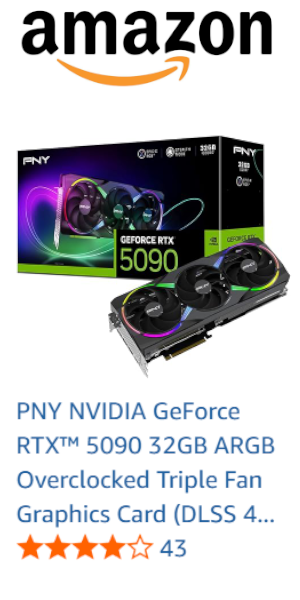Coin collecting is a pursuit rich in history that offers enthusiasts the unique opportunity to own a piece of the past. Each coin tells a story, capturing the spirit of the age in which it was minted. Whether you're a novice or an experienced numismatist, understanding the terminology and concepts within this field is essential to building a meaningful and valuable collection. In this guide, we'll explore the nuances of coin collecting and the intricacies of coin values.
Coin collecting is a pursuit rich in history that offers enthusiasts the unique opportunity to own a piece of the past. Each coin tells a story, capturing the spirit of the age in which it was minted. Whether you're a novice or an experienced numismatist, understanding the terminology and concepts within this field is essential to building a meaningful and valuable collection. In this guide, we'll explore the nuances of coin collecting and the intricacies of coin values.
Understanding Coin Terms and Values
Coin collecting extends beyond simple accumulation, requiring an appreciation for the art and science behind numismatics. This includes recognizing the significance of coin designs, components, and their place in history.
- Alloy: This is a mixture of metals used in the creation of coins. The composition of an alloy can influence both the appearance and the durability of the coin.
- Annealing: A process through which metal is heated and cooled to strengthen the coin and prepare it for striking. This is critical for ensuring the quality and longevity of the coin.
- Assay: The testing process for determining the precise metal content within a coin, critical for establishing its true value.
- Billon: A term describing an alloy consisting of precious metal, such as silver, mixed with a larger quantity of base metal, like copper.
- Bullion: Precious metals like gold and silver that are traded based on their metal content and typically come in bar, ingot, or coin form. Bullion coins are a popular choice for both investors and collectors.
- Cameo: The effect seen on coins, usually proofs, where the design appears frosted against a mirror-like background, highlighting the intricate details of the imagery.
- Cent: A denomination of currency, usually the lowest value coin within a monetary system.
- Circulated: Coins that have been used in everyday transactions, showing varying degrees of wear.
The Minting Process and Coin Production
Coins undergo a strict minting process, making each term associated with their production worth knowing.
- Die: The hardened piece of metal with an engraved design that is used to strike a coin.
- Edge: The third side of a coin, which can be plain, reeded, or decorated with lettering or ornamentation.
- Mint: The facility where coins are produced. The location of a mint can contribute significantly to a coin's rarity and, by extension, its value.
- Obverse and Reverse: Respectively, the front and back of the coin. The obverse generally features a prominent design such as a nation's emblem or a monarch's effigy, with the reverse often showcasing the coin's denomination or a commemorative design.
- Overstrike: This occurs when a coin is struck over an existing coin. Although typically a mistake, overstruck coins can be of great interest to collectors due to their rarity and the stories they may tell.
Collecting and Trading: The Numismatist's Practice
At the core of coin collecting are the practices that define the enthusiastic numismatist.
- Certified Coin: A coin that has been professionally graded for authenticity and quality, providing assurance of its condition.
- Circulated and Uncirculated: A distinction between coins that have been used in everyday transactions (circulated) and those that have not (uncirculated).
- Clad Coinage: A coin that has layers of different metals bonded together, combining properties such as increased durability and resistance to tarnishing.
- Clipping: The illegal practice of shaving off small amounts of precious metal from a coin's edge, historically done to profit from the removed metal.
Enhancing Your Coin Knowledge
Continuing education is essential for collectors who strive for expertise.
- Electrotype: A duplicate coin created through electroplating, used often in museum displays.
- Encapsulated Coin: A coin encased in a protective plastic holder by a third-party grading service.
- Error Coins: Coins with minting flaws; they can be intriguing and valuable due to their rarity.
- Exonumia: The study of objects related to currency, such as medals, tokens, badges, and similar items, which have numismatic interest but are not considered formal currency.
Building a Well-Rounded Collection
Diversifying your numismatic holdings can be a fulfilling aspect of the hobby.
- Exonumia: Expanding your collection beyond traditional coins to include medals, tokens, and other related items, enriching your assortment.
- Notaphily: The study and collection of paper currency, which offers insights into cultural history and engraving art.
- Philately: The field of collecting postage stamps, closely linked to numismatics, as both forms involve the study of beautifully designed small objects representing national identities.
- Scripophily: The collection of historic stock certificates and bonds, offering a glimpse into financial history and industrial art.
Conclusion
This guide illustrates the complexity and allure of coin collecting. Whether you are intrigued by the unique stories behind exonumia, the designs on paper currency in notaphily, or the artistic drafts of philately and scripophily, each aspect of numismatics provides a unique view into our past and presents exciting opportunities for collecting and investment. Explore the world of coins, and revel in the fascinating tapestry of history and craftsmanship that each piece embodies.
Remember, whether your focus is building a diverse collection or homing in on specific rarities, understanding the language and nuances of numismatics is paramount. With each coin acquired comes a deeper appreciation for the factors that influence value—from the historical context of its mintage to its condition, rarity, and metal content. Keep expanding your knowledge, engage with fellow collectors, and cherish the endless pursuit of numismatic discovery.
Information for this article was gathered from the following source.


